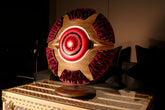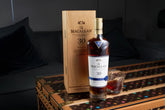Exploring the Diverse Tobacco Landscapes: A Comparative Tasting of Dominican, Nicaraguan, and Cuban Cigars
In the realm of premium cigar, there are two countries have become the tobacco production giants: the Dominican Republic and Nicaragua. Beyond these New World powerhouses, the legendary Cuban cigars continue to hold a revered place in the hearts of cigar aficionados. In this exploration, let’s delve into the key differences that distinguish the flavor profiles of Dominican, Nicaraguan, and Cuban tobaccos, and find out the insights that may enhance all cigar enthusiasts ‘appreciation for the rich tapestry of the cigar world.
Why the Prominence of Dominican and Nicaraguan Tobacco become rise?

Over the past few decades, there has been a notable increase in the popularity of cigar made in the Dominican and Nicaraguan with certain well-known brands coming from these countries.
The Dominican Republic, with its tropical and humid climate in the Cibao Valley, has long been associated with creamy and milder flavor profiles, often showcased in cigars finished with Connecticut Shade, Connecticut Broadleaf, and Ecuador wrappers. Legendary cigar-maker Carlito Fuente, considered a pioneer in the industry, has significantly contributed to raising awareness of Dominican cigars by creating well-known brands like Ashton VSG and Arturo Fuente Opus X.
Similarly, Nicaragua’s fertile volcanic soil, particularly in regions such as Estelí and Jalapa, provides an ideal growing environment for tobacco known for its bold, rich and intense flavor profile. Nicaraguan cigars, with their earthy, leathery, and peppery aromas, have become the norm in the premium cigar industry. Since the 1990s, the cigar industry in the country has flourished, with several renowned Dominican manufacturers setting up base in Nicaragua to produce their own line of Nicaraguan-blended cigars.
Distinguishing their Flavor Profiles

While Nicaragua and the Dominican Republic both make perfect cigars, both countries offer a unique smoking experience that suits all kinds of tastes. Dominican cigars are generally characterized by their creamy and milder taste profiles, often referred to as smooth and subtle. This may be due to the fact that the tobacco is grown in a tropical, humid environment and that the drying processes are usually faster than in the Cuban technique, which can produce a lighter body and softer tastes.
In contrast, Nicaragua cigars are well known for their robust and strong taste profile, which include strong earthy, leather, and spice notes. The cigar’s full-bodied taste and powerful punch are enhanced by the prolonged fermentation duration used in the manufacturing process, which also preserves the tobacco’s natural oils and resins.
Cuban cigars, grown in the small farms of Western Cuba are known to be among the best in the world and deliver a special and highly appreciated smoking experience. Cigar enthusiasts have been captivated for decades, with the rich and complex tastes of Cuban tobacco, often described as nuanced and layered.
In conclusion, the world of cigars is incredibly diverse, which is a symbol to the artistry and skills of tobacco blending and cultivation. Cigar aficionados are spoiled for the choice in this vibrant and constantly evolving world of tastes, regardless of their preference for the bold and robust character of Nicaraguan cigars, the creamy smoothness of Dominican cigars or the legendary allure of Cuban cigars.










